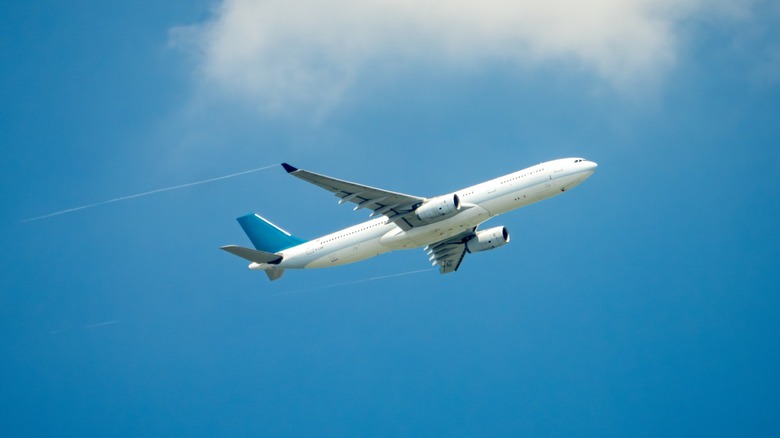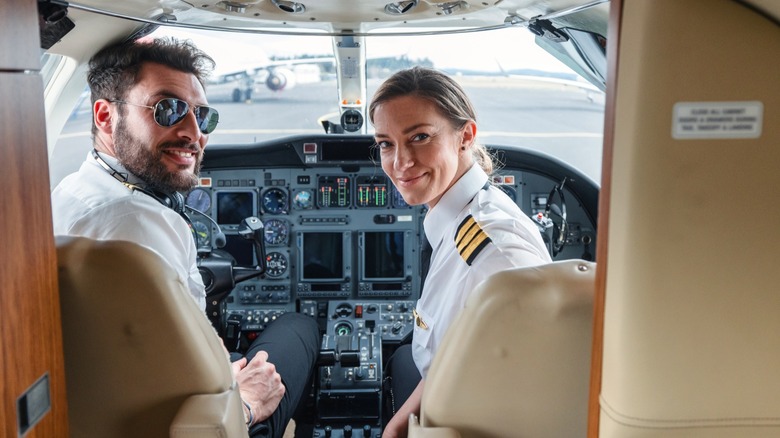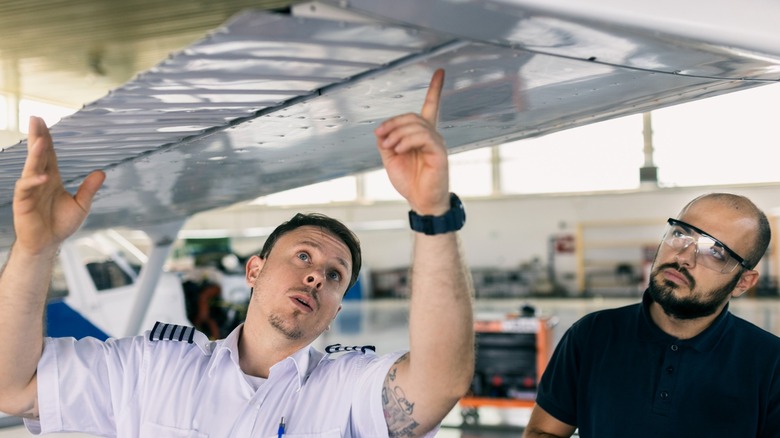What Is ETOPS And Why Is It Important For Jets With Two Engines?
Getting on a plane and landing safely always brings a sense of relief, especially in light of recent crashes. However, this doesn't mean you didn't look out the window mid-flight and think about everything that could go wrong. What if the plane tire bursts at that height, or an engine catches fire? Can the plane keep going if it loses an engine?
This kind of thinking has actually shaped commercial aircraft design for ages. Planes that needed to cover long distances over oceans or remote areas had three or four engines. The thinking was that more engines meant better odds if one stopped working. But things are different now.
The advances in technology, coupled with a specific set of rules called ETOPS, have changed the industry. ETOPS originally stood for "Extended-range Twin-engine Operational Performance Standards." These rules allow planes with two engines to fly the same long distances that used to need big, heavy planes with four engines. (There are still a few exceptions, though: planes don't fly over Antarctica.)
The main point here is that twin-engine planes have become the preferred option for many airlines. It's easy to understand why. Having fewer engines results in lower fuel and maintenance costs for airlines. This benefits passengers too, leading to somewhat quicker flights, fewer layovers, and, in many cases, more affordable tickets. But what exactly is ETOPs?
What exactly is ETOPS?
ETOPS used to stand for Extended-Range Twin Operations Performance Standards. Now, it's just Extended Operations, a certification that permits twin-engine planes to travel long distances over oceans or remote areas where airports aren't exactly close by. Once, twin-engine aircraft could only fly routes that kept them within an hour of an emergency landing site. This was because the engines on older planes weren't as dependable as the powerful jet engines used in commercial aviation these days.
This rule, however, didn't affect planes with four engines like the Boeing 747. These aircraft could keep flying even if one engine stopped working. In contrast, twin-engine planes were considered too dangerous, especially for long flights over water. This inspired the industry joke for ETOPS: Engines Turn Or Passengers Swim, which really just underscores how safety must always come first when it comes to planning flight routes.
Before ETOPS, planes with two engines couldn't fly direct transoceanic routes. As a result, flight routes were generally longer and less efficient. But as engines became more reliable, regulators realized it was increasingly safe for these planes to fly even farther. So, instead of restricting planes by their number of engines, ETOPS ratings now inform airlines how far a plane can travel using one engine.
So, a plane with an ETOPS-180 rating has permission to fly routes up to 180 minutes — which is about three hours — from an emergency landing spot. Some newer planes, like the Airbus A330neo, are rated ETOPS-285, which means they can fly almost five hours away from the nearest diversion airport. These ratings are based on thorough safety checks, maintenance standards, and flight procedures that guarantee the plane can handle emergencies and passengers don't have to swim.
How do jets with two engines become ETOPS-certified?
The ETOPS certification process is split into two stages: one for the manufacturers and another for airlines. Manufacturers have to demonstrate that their twin-engine jets can keep flying safely even when one engine stops working mid-flight. This starts during the design phase, where engineers have to build in extra layers of redundancy across all critical systems. Everything from electrical and hydraulic systems to fire suppression and communication equipment must be designed to keep functioning even when one engine fails. Manufacturers have to prove this through rigorous testing.
After an aircraft model gets its ETOPS certification, the responsibility shifts to the airlines. They need to get operational approval for their planned routes. This involves airlines creating special training programs for pilots, maintenance crews, and flight dispatchers. One thing to keep in mind, though: the higher the ETOPS rating they want, the tougher the requirements get. For example, ETOPS-240 certification, which lets flights go up to 240 minutes from the closest diversion airport, has much stricter rules than ETOPS-120. Meeting these standards can be complex and expensive, but many airlines find it pays off. They end up with more efficient routes, use less fuel, and make better use of their fleet overall.
A major part of the certification process includes airlines proving that they can handle emergency diversions to remote airports. These places may not be equipped to handle a sudden influx of hundreds of passengers. Airlines, however, must have solid plans to provide food, shelter, and medical care. They also have to coordinate with local authorities to keep passengers safe and comfortable until the situation is resolved.
Even though getting certified isn't easy, these particularly tough maintenance standards have made twin-engine planes more reliable. Now, they can fly almost anywhere on Earth.


